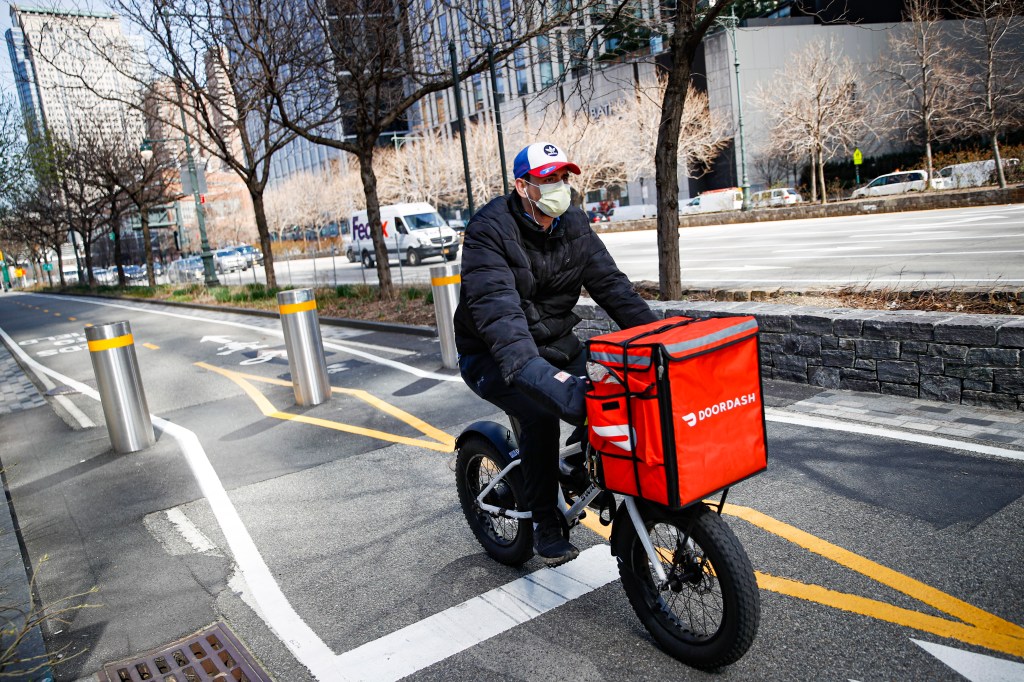One out of eight New York City low-wage workers earn their pay by working for an app-based labor platform operated by companies like Uber, Lyft or DoorDash. Fortunately, New York City is leading the nation in ensuring that 175,000 app-dispatched drivers and food delivery workers take at least the equivalent of the state $16 minimum wage after covering their expenses.
Since the labor platforms treat their workers as independent contractors, these largely immigrant workers are not covered by the minimum wage and are stripped of traditional employee rights and safety net protections.
There’s nothing inherent in the technology of labor platforms that requires gig workers to be treated as second class citizens. The companies chose that because weak state and federal laws don’t prevent it, with the result that they profit handsomely from sheer worker exploitation. It is critical that the city step into this breach with innovative regulations to establish meaningful pay floors where the platform companies were driving gig workers into poverty and despair.
New York City recently released data showing the remarkable impact that the delivery worker pay standard is making since it took effect last December. Company pay for 75,000 delivery workers soared to $17 from $5 per hour. Tips declined due to a punitive change by Uber Eats, DoorDash and other delivery companies to make it harder for consumers to tip, yet the pay increase more than made up for the tip decline. Total worker earnings including tips rose nearly 90% to $19.26 per hour.
The city’s pay standard brings order to the Wild West mentality fomented by the platform companies. Boosted by pandemic-driven circumstances, restaurant delivery orders have skyrocketed over the past four years. The companies enticed an ever-growing number of workers onto their platforms without regard to keeping the supply of workers aligned with the growth in restaurant orders.
From the first quarter of 2022 to the third quarter of 2023 (the last quarter before the pay standard took effect) the number of on-call hours workers spent waiting for orders jumped by 36%, more than seven times the 5% order growth.
The companies evinced no concern regarding the mismatch they created — they paid workers only for the time spent delivering meals, not the time waiting around for an order. That’s like paying a grocery store cashier only for the time spent scanning items and not for the time waiting for a customer ready to check out.
Since the city’s pay standard requires the companies to now pay for “on-call” time as well, the new data show a dramatic efficiency gain — deliveries per hour rose by more than one-third. The companies have started to regulate workers’ access to the platforms to keep the supply of workers in line with the expected flow of orders.
A regulating mechanism always made sense, but the companies previously failed to do that, reflecting their disregard for workers and their willingness to take unscrupulous advantage of workers’ time and the investments workers make in their vehicles, e-bikes or mopeds.
Without the pay standard, delivery worker pay would have kept falling as it had in the 18 months before the pay standard when it dropped from $7 to $5 an hour. The pay standard is a game-changer — in its first full quarter it transferred more than $12 million per week from the companies to workers. That still leaves the companies with a “take-rate” of 29% to cover costs and profits. It had been 65% before the pay standard.
The initial pay standard is not perfect. With data from the companies on individual workers, the city’s Department of Consumer and Worker Protection will be able to ensure that all workers are treated fairly. The minimum hourly pay level rose to $19.56 on April 1, reflecting both a phase-in and an inflation increase.
Workers need to be adequately compensated for the cost of their bikes and better quality and safer batteries. The companies shouldn’t penalize workers who obey speed limits and navigate city streets in a manner that keeps both workers and pedestrians safe.
New York City’s gig worker pay standards have demonstrated that consumers can get the convenience of rides and meal deliveries without workers paying the price. In regulating gig work to make it both more efficient and fair for workers, the city is leading the way nationally and internationally.
Parrott is a labor economist and senior advisor and senior fellow at the Center for New York City Affairs at The New School.
